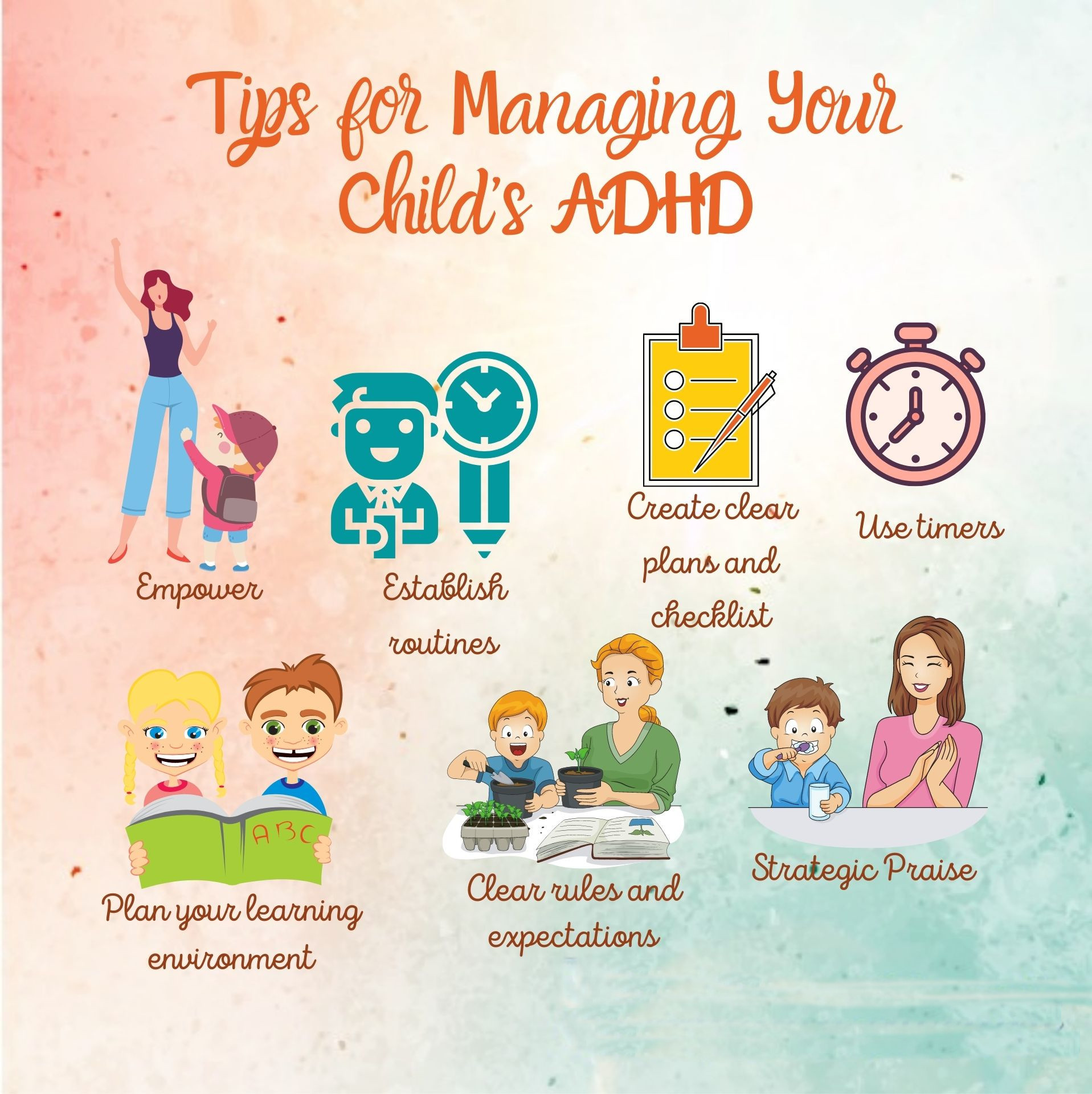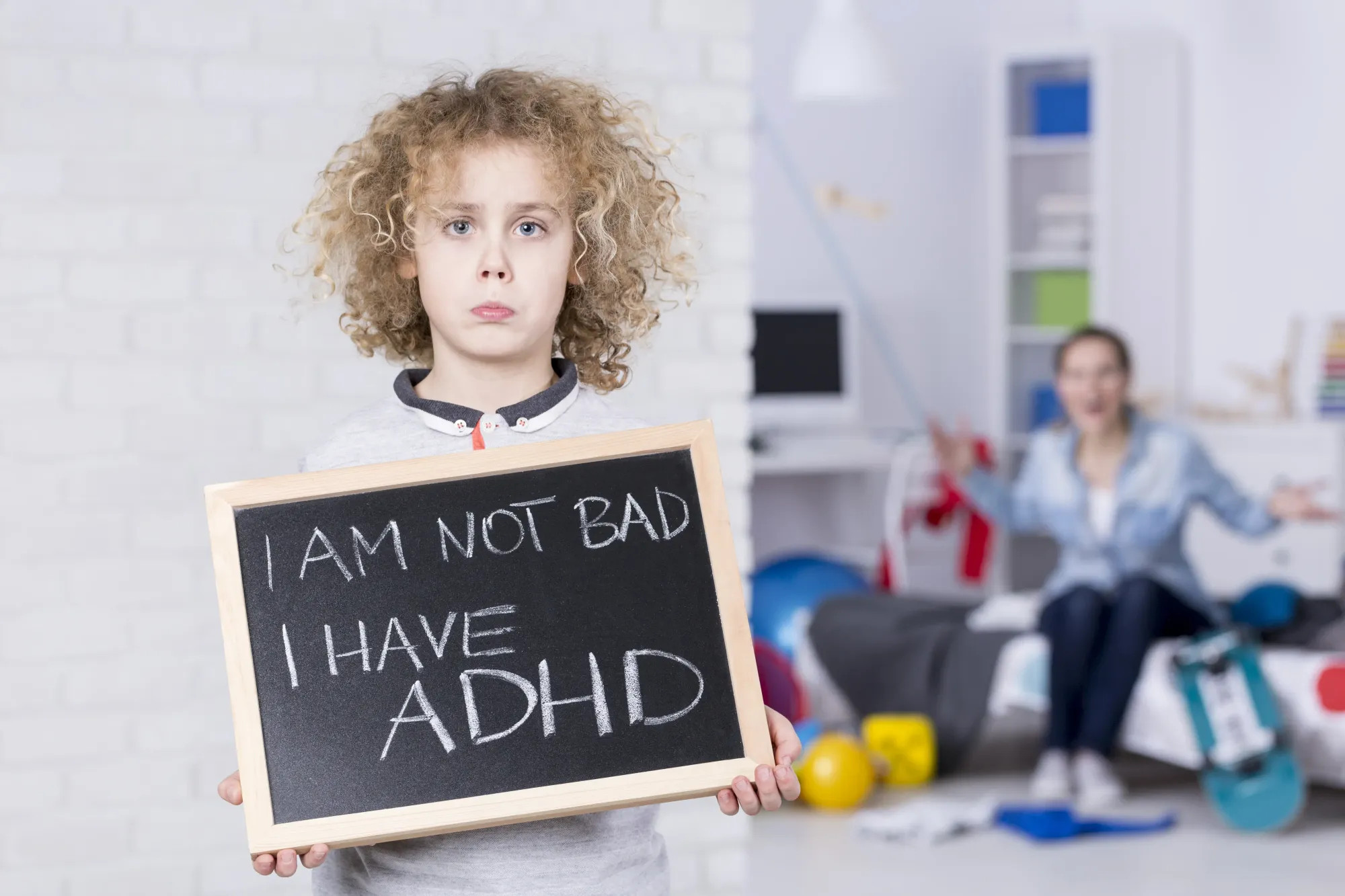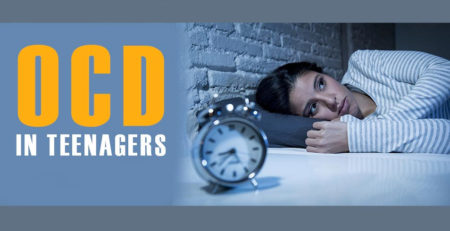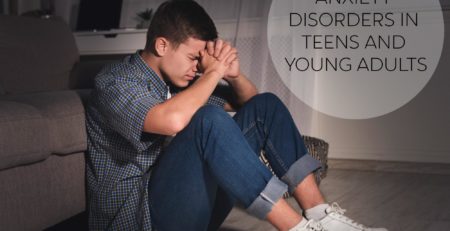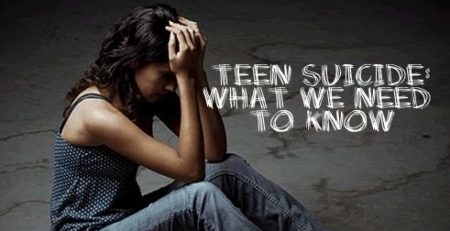Understanding Attention-Deficit/Hyperactivity Disorder (ADHD) in Children: Symptoms, Treatment, and Coping Strategies
Attention-Deficit/Hyperactivity Disorder, commonly known as ADHD, is one of the children’s most common neurodevelopmental disorders. It affects millions of children around the world and can have a significant impact on their daily lives. As a parent, teacher, or caregiver, it can be difficult to understand what your child is going through with ADHD and how to help them cope with their symptoms. This blog post will provide an overview of ADHD, including its symptoms, treatment options, and coping strategies.
ADHD is a brain disorder that impacts a child’s ability to concentrate and control their impulses. Some of the common symptoms of ADHD include hyperactivity, impulsivity, and inattention. These symptoms often manifest in school, home, or social settings. Children with ADHD may struggle to complete tasks, follow instructions, and focus. If left untreated, ADHD can affect a child’s academic performance, social relationships, and mental health.
There are several treatment options available for children with ADHD. One of the most effective treatments is medication, such as stimulants or non-stimulants. Medication can help reduce the symptoms of ADHD by increasing dopamine levels in the brain and improving neurotransmitter communication. However, medication is not a one-size-fits-all solution, and it’s essential to work with a doctor to determine the proper dosage and type of medication for your child.
Behavioral therapy is another treatment option available for children with ADHD. It involves identifying and modifying behaviors that contribute to ADHD symptoms. Behavioral therapy may include parent training, social skills training, and cognitive-behavioral therapy. It can be a useful treatment option for children who cannot tolerate medication or who need additional support in managing their symptoms.
In addition to medication and behavioral therapy, a few coping strategies can help children manage their ADHD symptoms. For example, children can benefit from a structured routine, clear expectations, and plenty of breaks. It can also be helpful to break down tasks into manageable chunks and provide regular feedback on progress. Other strategies may include using visual aids, reducing distractions, and providing regular physical activity.
What are the different types of ADHD?
Three major types of ADHD include the following:
- ADHD, combined type. Attention Deficit Hyperactivity Disorder, or ADHD, is extremely common. This neurological disorder is classified into three separate categories. One type of predominantly hyperactive behavior is where impulsion and hyperactivity are ramped up as the primary symptoms present in those who have been diagnosed. In addition, those diagnosed also commonly present with heightened levels of distractibility and an unexpected lack of attentive behavior. These two traits can therefore be categorized together to form a diagnostic group that has come to represent a distinctive presence amongst this disorder population.
- ADHD, impulsive/hyperactive type. Attention Deficit Hyperactivity Disorder, or ADHD, is a common psychological condition that affects children and adults alike. This condition is differentiated into one of three types: Predominantly Inattentive, Predominantly Hyperactive/Impulsive, and Combined Type; however, the least common of these forms is referred to as the Predominantly Hyperactive/Impulsive type. Characterized by impulsive actions and hyperactivity without accompanying difficulty with attentional issues or distractibility, it does require professional diagnosis and effective treatment. Unpredictable outbursts, difficulty controlling behavior, and restlessness, among other indicators, are often associated with this particular form of ADHD. If you believe that you suffer from Predominantly Hyperactive/Impulsive ADHD it is important to identify and recognize the indicators of this disorder so that it can be addressed properly. Professional diagnosis in such cases is key not only for effective treatment plans but also for proper management moving forward.
- ADHD, inattentive and distractible type. Attention Deficit Hyperactivity Disorder (ADHD) is commonly thought of as primarily encompassing hyperactive behaviors; however, this type of ADHD variation features predominating inattention and distractibility without any healthy physical activity. The main symptom associated with this condition is lacking concentration and the inability to focus on the task at hand. Additionally, the difficulty recalling instructions long enough to finish a job or assignment makes it difficult to complete tasks in a timely manner, if at all. Those suffering with such a condition can also struggle maintaining social relationships due to their inattentiveness. This hinders connection to their fellow peers and prevent them from creating meaningful dialogues. Overall, this type of ADHD leads to numerous difficulties which should be addressed by a professional with adequate specialization.
What causes attention-deficit/hyperactivity disorder?
Attention Deficit Hyperactivity Disorder (ADHD) has been one of the most thoroughly and extensively researched areas in regard to mental health in children and adolescents. Despite the considerable study put into diagnosing, treating, and understanding ADHD, its precise cause is still largely unknown. Current evidence suggests that it has genetic root causes, constituting a brain-based biological disorder instead of being developed from a later-life environmental stimulus. Studies have suggested lower levels of Dopamine, an important neurotransmitter chemical found in the brain, may be present in individuals suffering from ADHD. By using PET scanners–a type of state-of-the-art technology allowing scientists to observe at what stage the human brain is operating– brain imaging studies deal conclusively show parts of the brain metabolizing at a substantially lower rate than typical For ADHD sufferers.
Who is affected by attention-deficit/hyperactivity disorder?
Recent estimates suggest that between 4-12% of all children have some form of Attention Deficit Hyperactive Disorder (ADHD). Research indicates that boys have a significantly higher chance of developing this disorder with the hyperactive or combined type than girls, with boys being two to three times more likely.
When children display symptoms of ADHD, families are self or deliberate their own research to learn more about it — particularly when these symptoms start impacting learning, meeting expectations, and undertaking age-appropriate activities. Additionally, many parents notice traces of their own histories within their child’s diagnosis, suggesting family similarities in dealing with the condition.
Families often find ways to connect, linking in written histories of ADHD before prompting formal assessments and seeking professional help to manage the challenges ahead. This helps them gain a better understanding and control in their interactions of how best to address the disorder.

What are the symptoms of attention-deficit/hyperactivity disorder?
The following are the most common symptoms of ADHD. However, each child may experience symptoms differently. The 3 categories of symptoms of ADHD include the following:
Inattention:
- The short attention span for age (difficulty sustaining attention)
- Difficulty listening to others
- Difficulty attending to details
- Easily distracted
- Forgetfulness
- Poor organizational skills for the age
- Poor study skills for the age
Impulsivity:
- Often interrupts others
- Has difficulty waiting for his or her turn in school and/or social games
- Tends to blurt out answers instead of waiting to be called upon
- Takes frequent risks, and often without thinking before acting
Hyperactivity:
- It seems to be in constant motion; it runs or climbs at times with no apparent goal except motion.
- Has difficulty remaining in his/her seat even when it is expected
- Fidgets with hands or squirms when in his or her seat; fidgeting excessively
- Talks excessively
- Has difficulty engaging in quiet activities
- Loses or forgets things repeatedly and often
- Inability to stay on task; shifts from one task to another without bringing any to completion.
It can be challenging for parents and caregivers to decipher the symptoms of ADHD from other medical conditions or behavior problems. Many children and teens may display some of the same symptoms as those with ADHD, but that does not necessarily mean they have the condition. Accurately diagnosing ADHD requires careful consideration of the individual’s behavior within both home and school environments. It is essential to consult with a doctor for an accurate diagnosis and understanding of how to manage best and treat ADHD.
How is attention-deficit/hyperactivity disorder diagnosed?
ADHD, or Attention Deficit Hyperactivity Disorder, is a behavior disorder that is most commonly diagnosed in childhood. It is typically identified by a pediatrician, child psychiatrist, or qualified mental health professional who gathers detailed information from parents and teachers regarding the child’s behavior, observes the child’s behavior, and conducts psychoeducational testing. Due to the fact that ADHD is a collection of symptoms, diagnosis requires evaluation of results from various sources, such as physical, neurological, and psychological testing. Physicians may also conduct tests to rule out other conditions before diagnosing ADHD. With proper evaluation and diagnosis, children with ADHD can receive the necessary treatment and support to thrive.
Treatment for attention-deficit/hyperactivity disorder
Specific treatment for attention-deficit/hyperactivity disorder will be determined by your child’s doctor based on the following:
- Your child’s age, overall health, and medical history
- The extent of your child’s symptoms
- Your child’s tolerance for specific medications or therapies
- Expectations for the course of the condition
- Your opinion or preference
Children with ADHD require treatment that involves several major components, including parental support and education in behavioral training, appropriate school placement, and medication. Parents can effectively manage their child’s illness by including all of these elements. One of the most successful treatments involves the use of psychostimulant medication, as it has proven to be highly effective in most children with ADHD. This medication can be a game-changer for both the child and their parents, leading to improved focus, fewer symptoms, and a better quality of life. However, it’s essential to remember that medication alone is not a complete solution. Behavioral training and support for both the child and the family are also necessary to effectively manage this condition.
Treatment may include:
Psychostimulant medications. If you or a loved one has been diagnosed with ADHD, you may wonder about the various available medication options. Several medications have been proven to help balance the chemicals in the brain that impede focus and impulse control. These medications work by stimulating the brain, allowing it to stay focused, and reducing the symptoms associated with ADHD. While many medications are available, you must consult a healthcare professional to determine the best option for your needs. With the help of the proper medication, individuals with ADHD can experience greater ease with maintaining attention, regulating impulses, and achieving personal and professional success.
- Methylphenidate (Ritalin, Metadate, Concerta, Methylin)
- Dextroamphetamine (Dexedrine, Dextrostat)
- A mixture of amphetamine salts (Adderall)
- Atomoxetine (Strattera). A non-stimulant SNRI (selective serotonin-norepinephrine reuptake inhibitor) medication with benefits for related mood symptoms.
- Lisdexamfetamine (Vyvanse)
Psychostimulants have been a trusted method of treating childhood behavior disorders since the 1930s and have undergone extensive research to improve their effectiveness. These medications are available in two forms – traditional immediate-release stimulants that work for a shorter duration of 1 to 4 hours and long-acting stimulant medications that last 8 to 9 hours, providing sustained relief. Timing of medication dosage is critical for school-going children to enhance their attention span and classroom productivity. With the right dosage plan, stimulant medications can be effective in helping children with behavior disorders to lead fulfilling lives. The common side effects of stimulants may include, but are not limited to, the following:
- Insomnia
- Decreased appetite
- Stomach aches
- Headaches
- Jitteriness
- Rebound activation (when the effect of the stimulant wears off, hyperactive and impulsive behaviors may increase for a short period of time)
Regarding treating ADHD in children and adolescents, stimulant medication is popular due to its effectiveness. However, parents may understandably have concerns about potential side effects. The good news is that most side effects are mild and tend to decrease with regular use. Additionally, if your child does experience side effects, adjustments in dosage can often be made to address those concerns.
Discussing the potential risks and benefits of any medication with your child’s doctor is always important. In some cases, antidepressant medications may also be used to help improve attention and reduce symptoms of aggression, anxiety, and depression. Remember, medicating a child for ADHD is a decision to be made in conjunction with a healthcare professional and based on the child’s specific needs.
Psychosocial treatments. Parenting children with ADHD can be an arduous task that presents a unique set of family challenges. The stress that comes along with this task can weigh heavily on the family, leaving them feeling overwhelmed. Fortunately, behavior management skills for parents have been developed to help reduce stress and provide coping strategies for families. These classes are designed to train parents in effective behavior management methods for their children. These classes typically take place in a group setting, which allows parents to connect with other parents experiencing similar challenges. This environment fosters a sense of community and promotes parent-to-parent support, providing families with the resources they need to handle the challenges of parenting children with ADHD may include the following:
- Point systems
- Contingent attention (responding to the child with positive attention when desired behaviors occur; withholding attention when undesired behaviors occur)
Teachers have an essential role in shaping the behavior of their students. Many are trained in behavior management techniques to help them navigate challenges in the classroom. These approaches may include daily reports to keep parents informed of their child’s in-school behavior and strategies for promoting specific positive behaviors. While behavior management can improve targeted outcomes, such as increasing the likelihood of completing schoolwork or minimizing physical contact, it may not significantly affect more general issues like inattention, hyperactivity, or impulsivity. Equipping educators with practical behavior management skills can create a safe and positive learning environment that fosters growth and development.
Prevention of attention-deficit/hyperactivity disorder
Attention Deficit Hyperactivity Disorder (ADHD) is a condition that affects a significant number of children worldwide. Yet, the exact preventive measures that can be taken to reduce its incidence are still unknown. However, early detection and intervention can significantly reduce the severity of symptoms, improve school functioning, foster healthy growth and development, and ultimately improve the child’s quality of life. By carefully monitoring children, parents, and healthcare professionals can identify and address potential issues early on, making it easier to treat and manage ADHD. While there may not be a surefire way to prevent the onset of ADHD, early detection and intervention can make a world of difference.
ADHD can be challenging for children, parents, and teachers to manage. However, with the proper treatment and coping strategies, children with ADHD can thrive. If you suspect that your child may have ADHD, it’s vital to seek the help of a qualified healthcare professional. A doctor or mental health provider can help you navigate the treatment options and provide support and guidance for managing your child’s symptoms. With therapy, medication, and support, children with ADHD can learn to manage their symptoms and achieve their full potential.
Contact us today at 816.819.5166 or schedule your appointment online.
